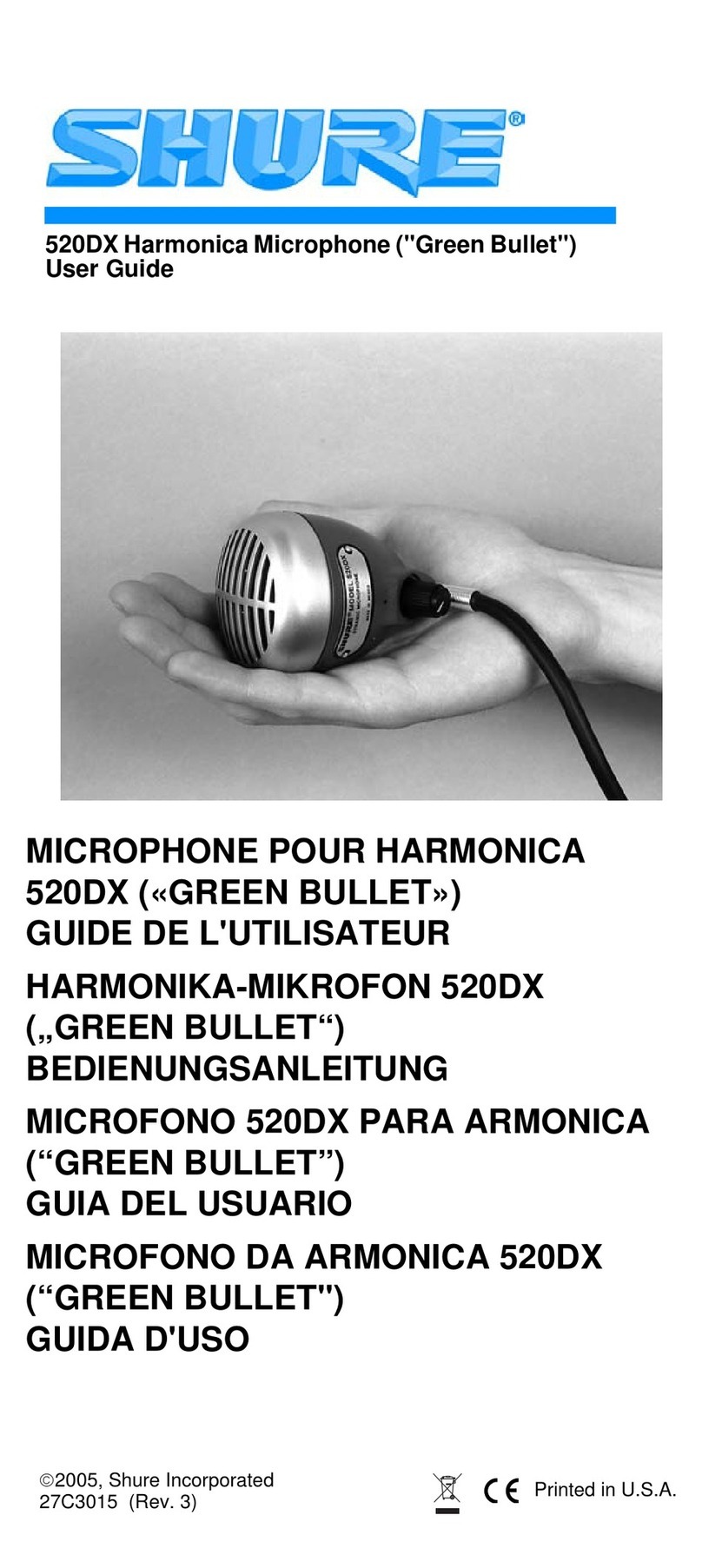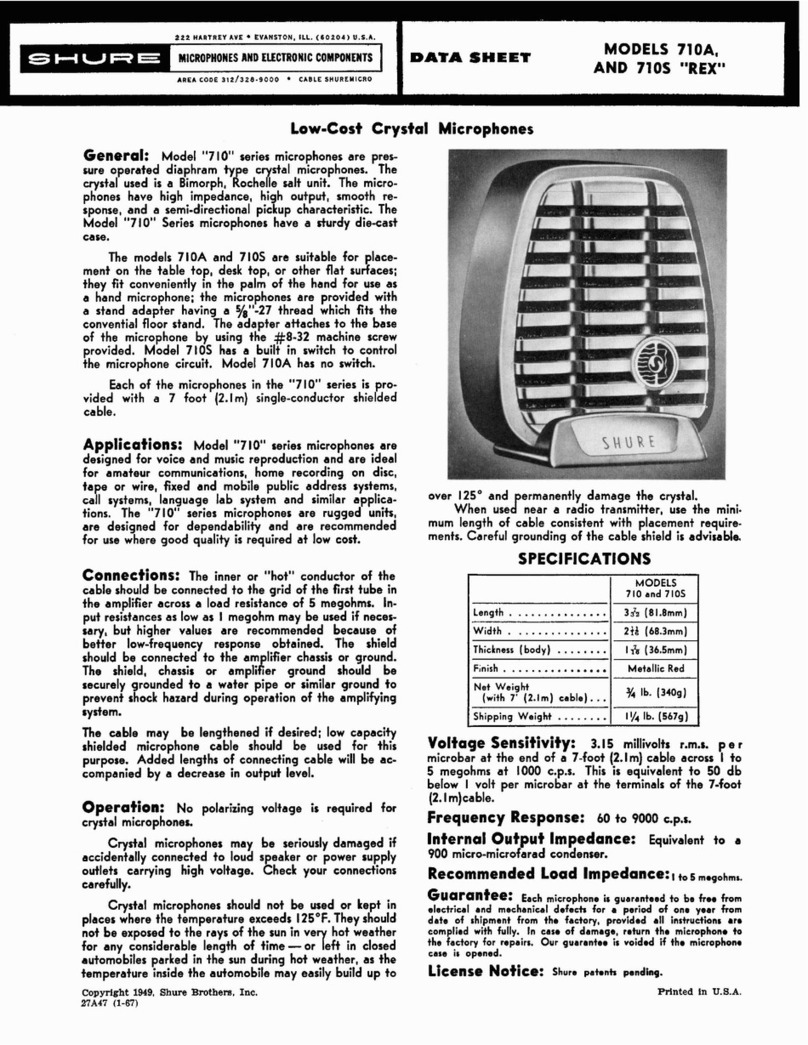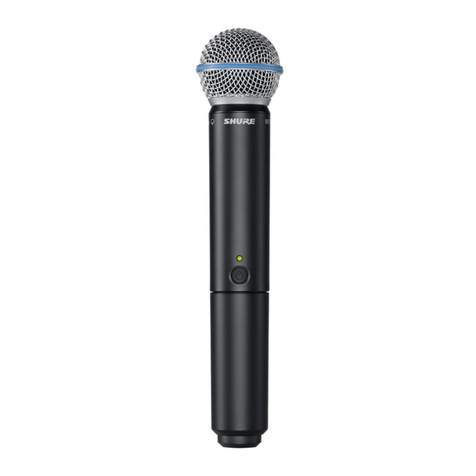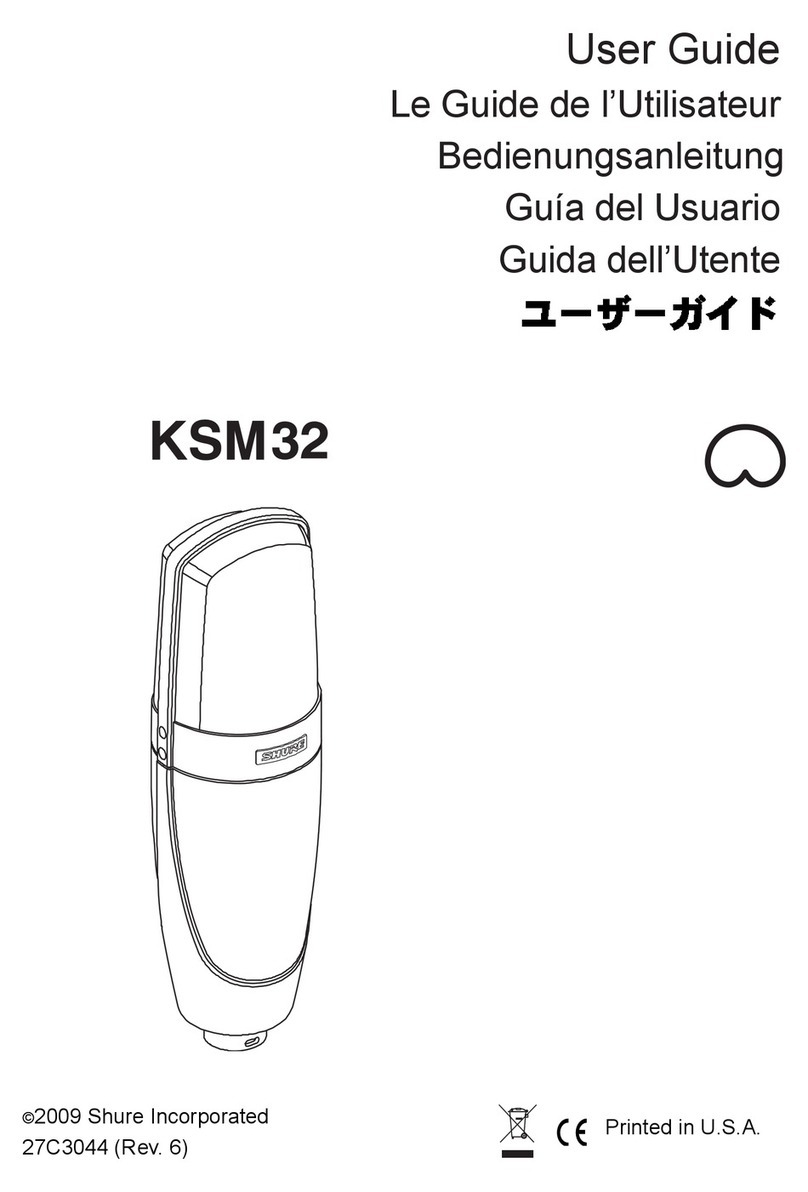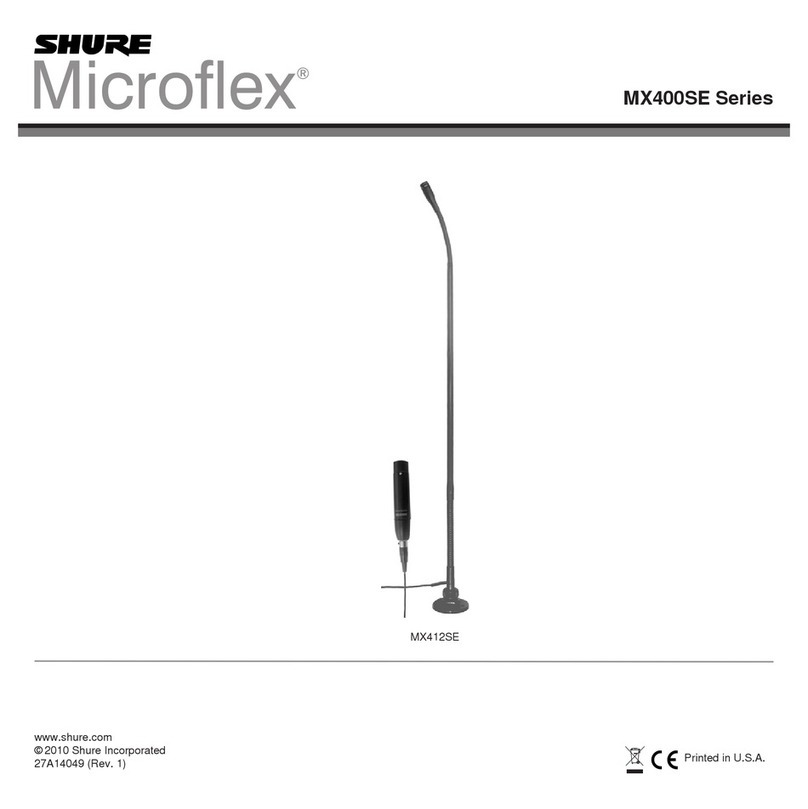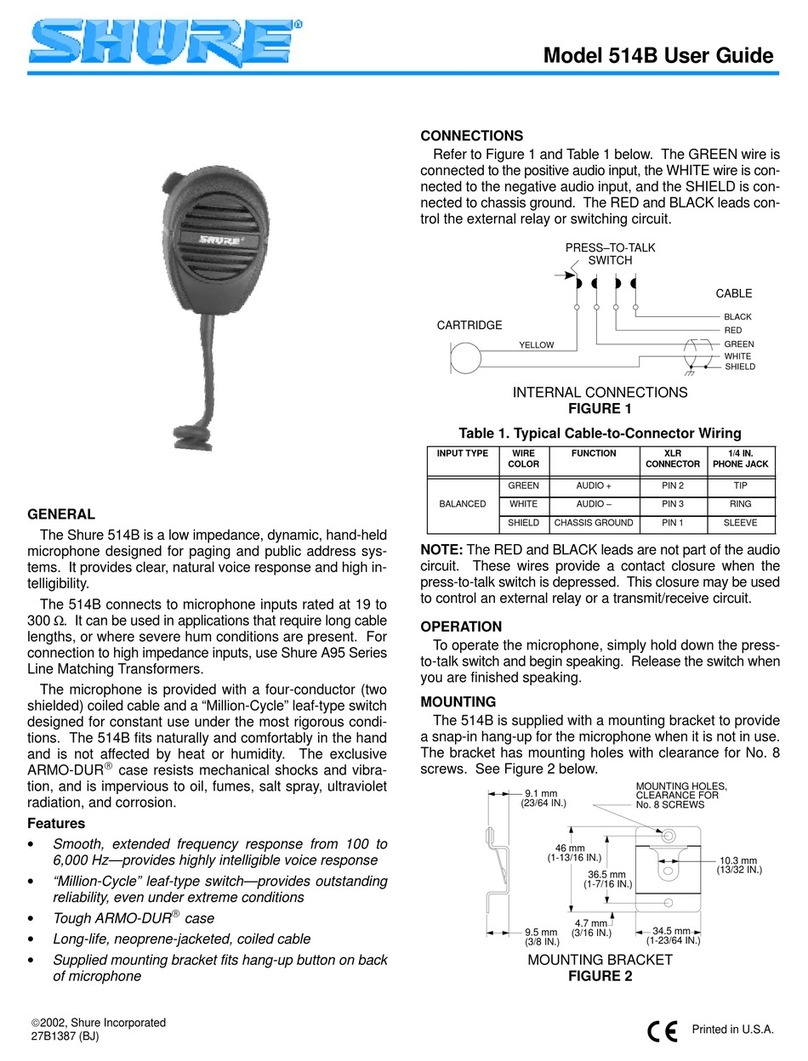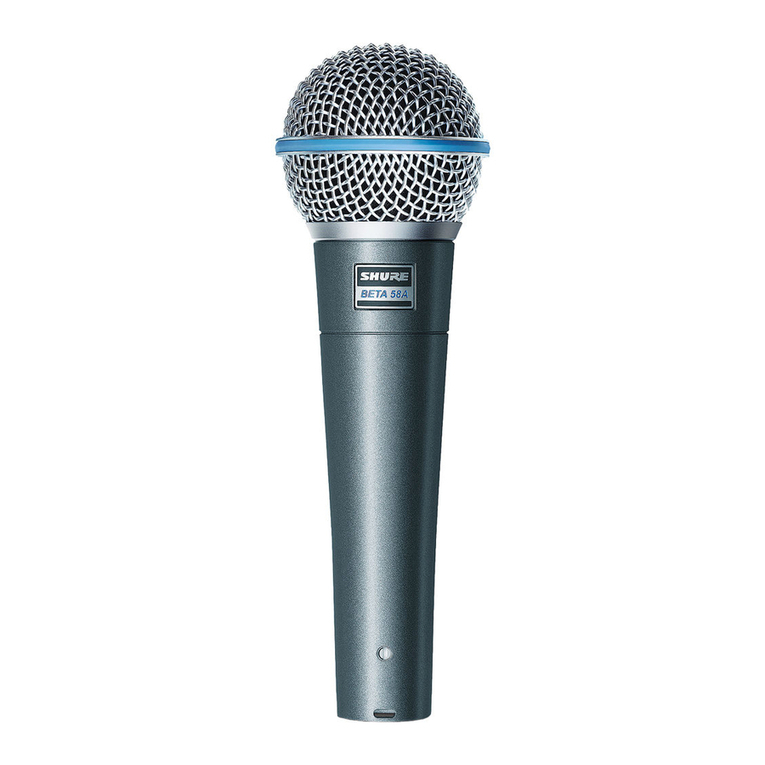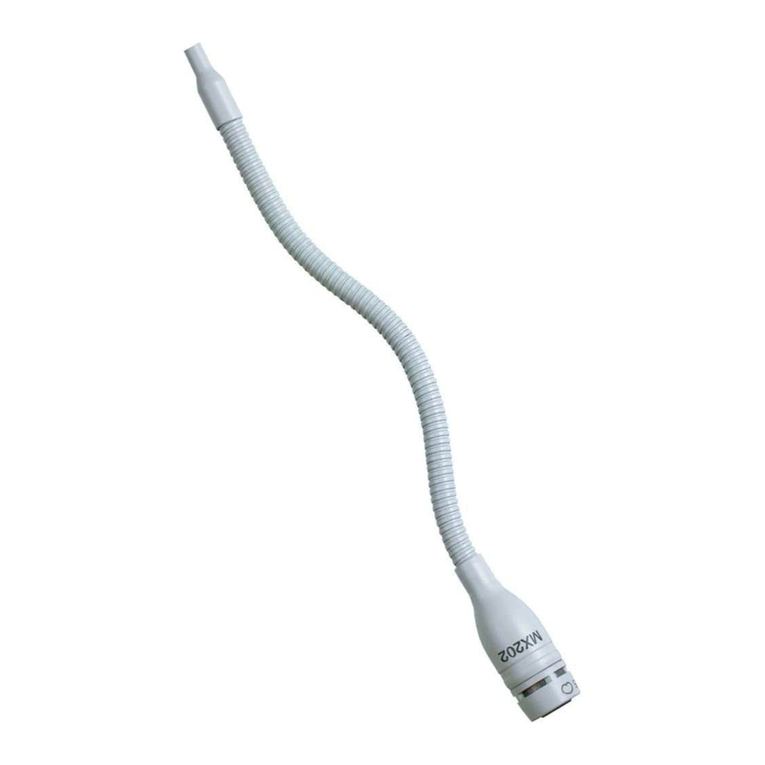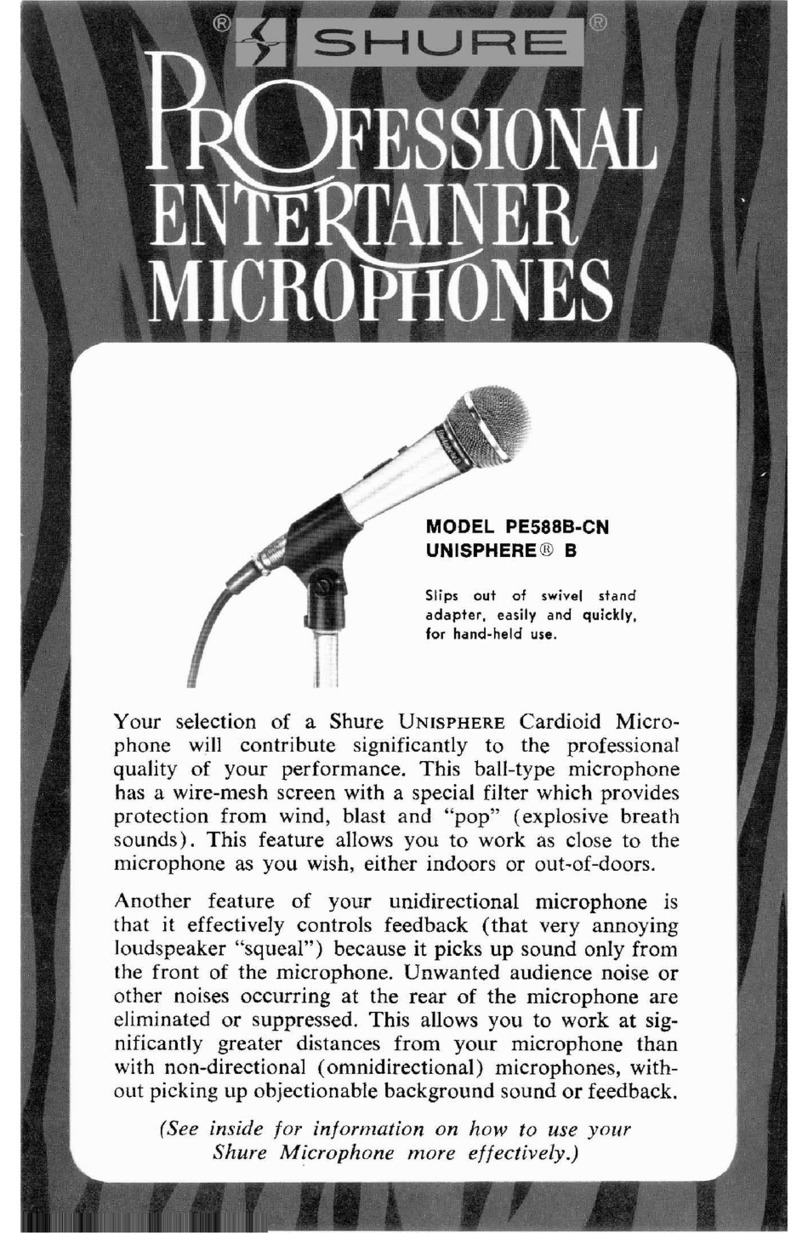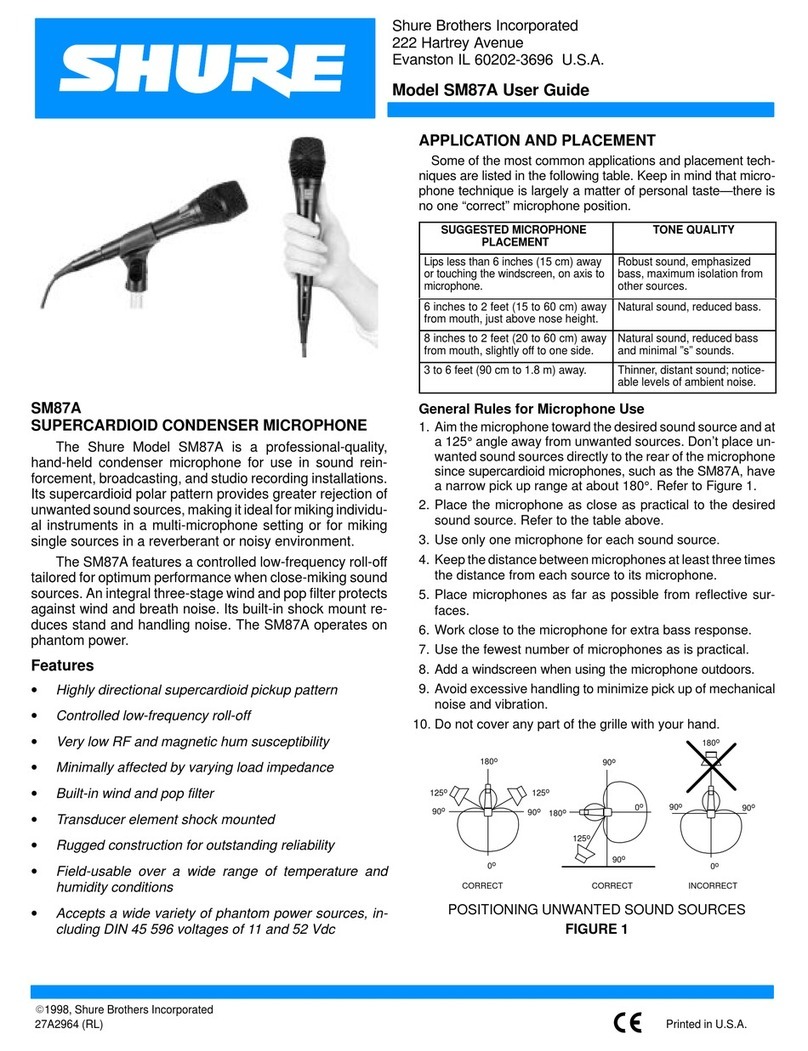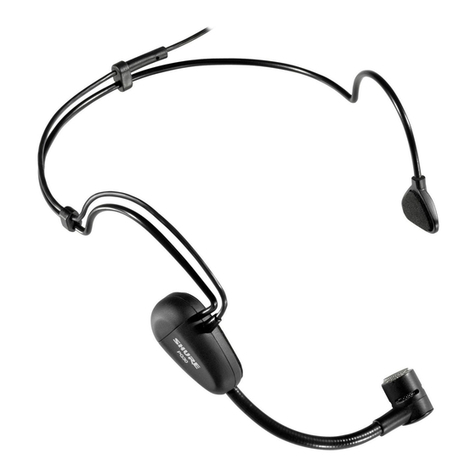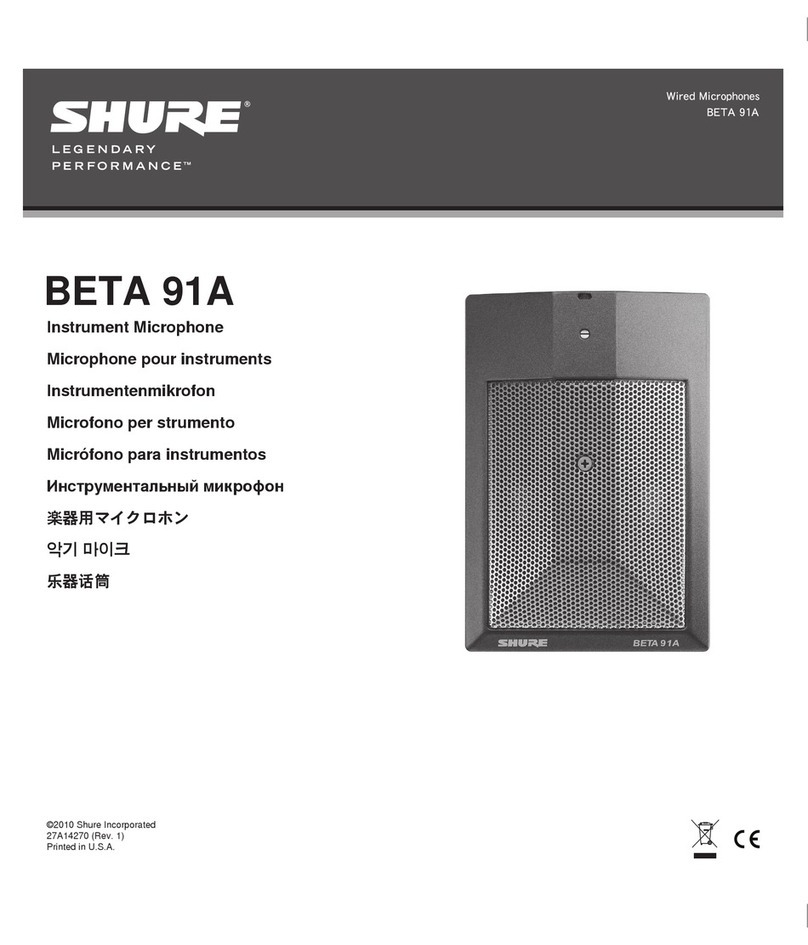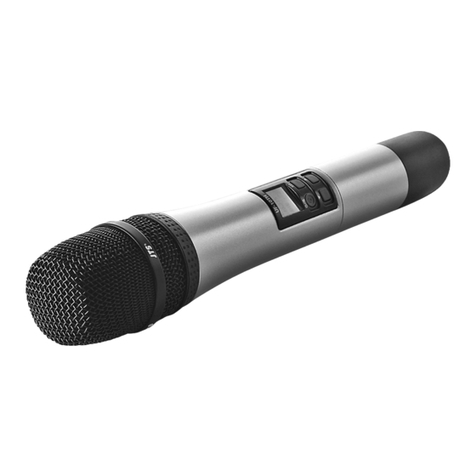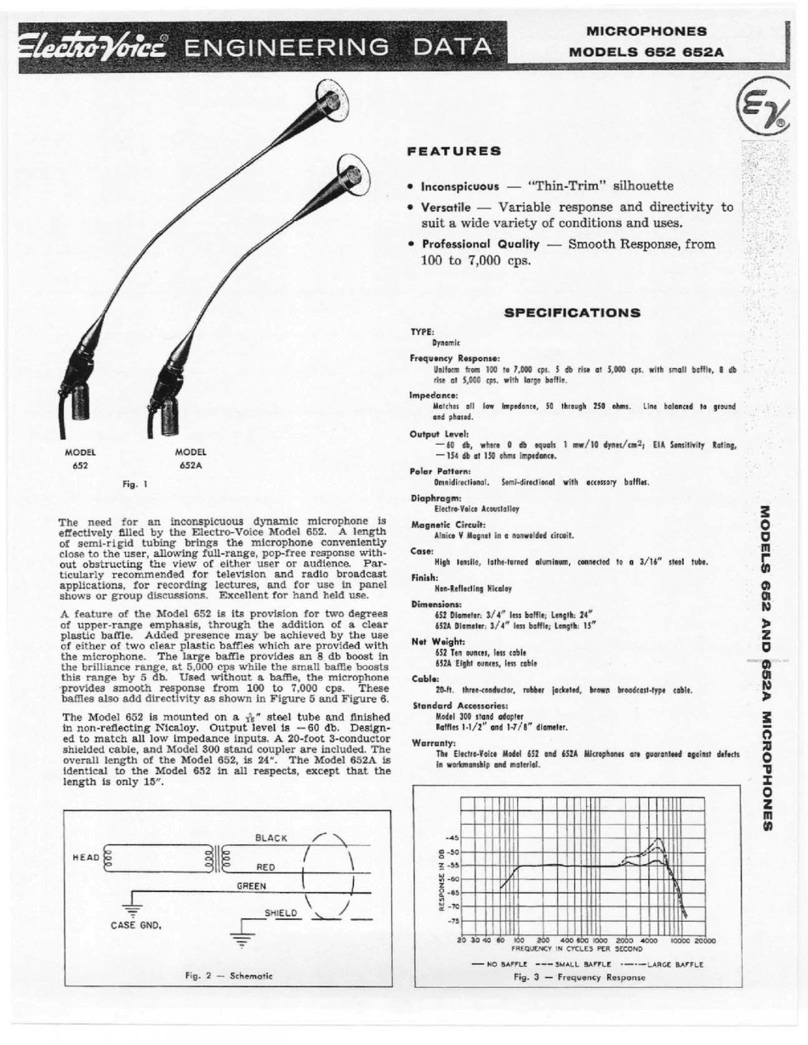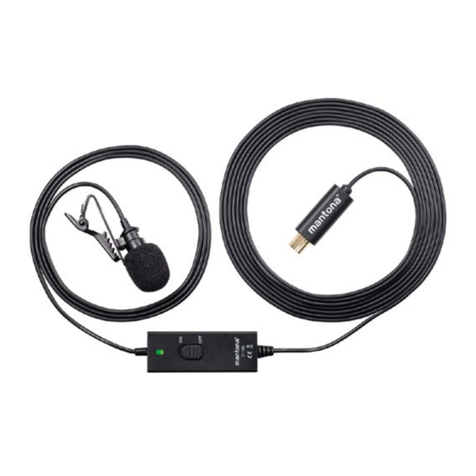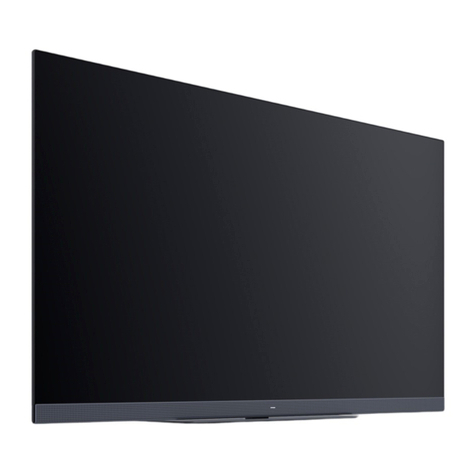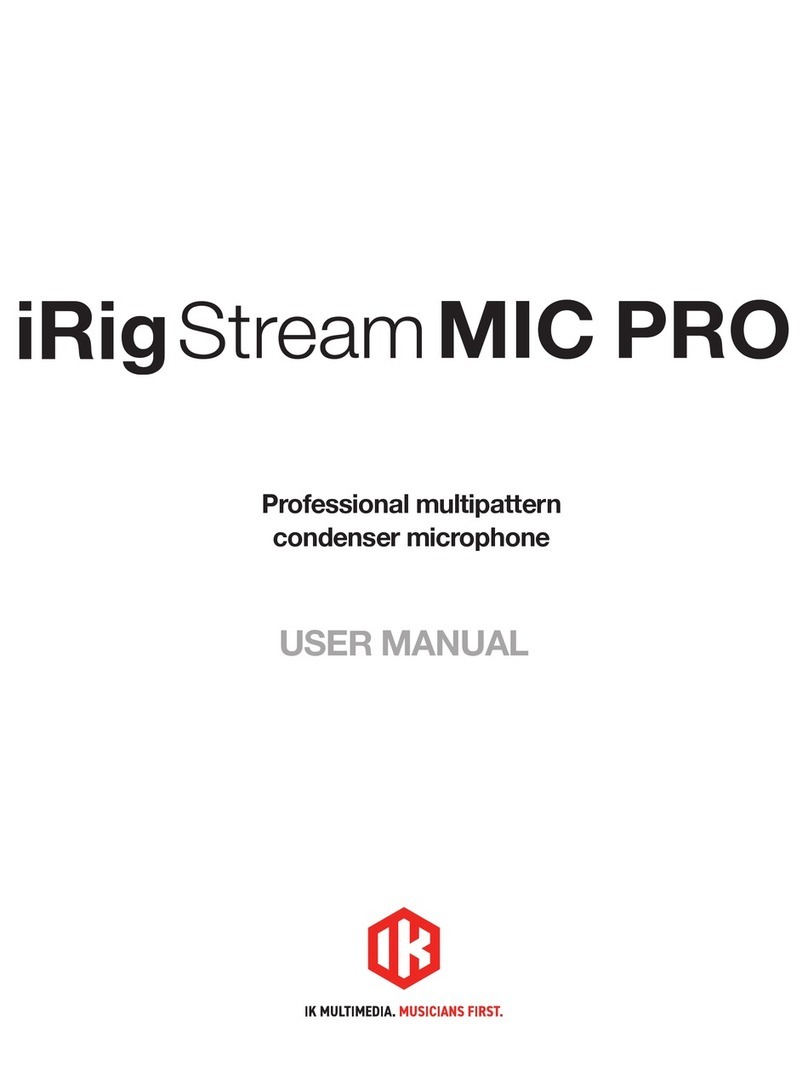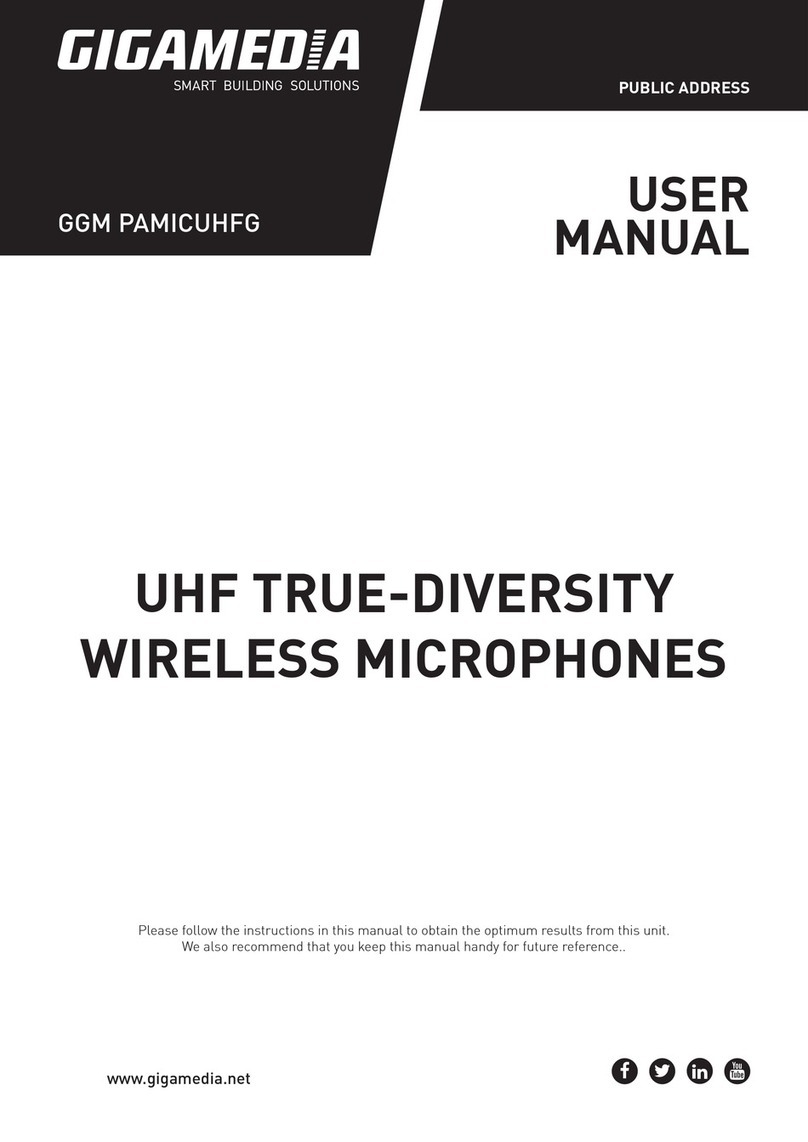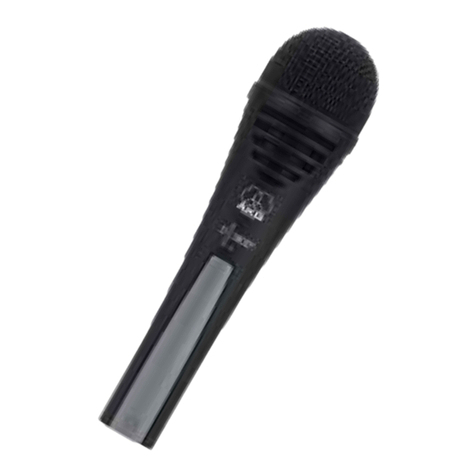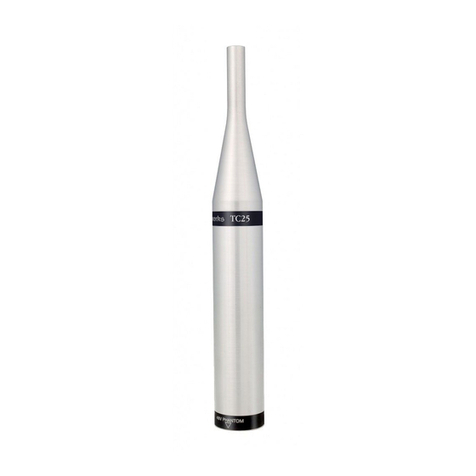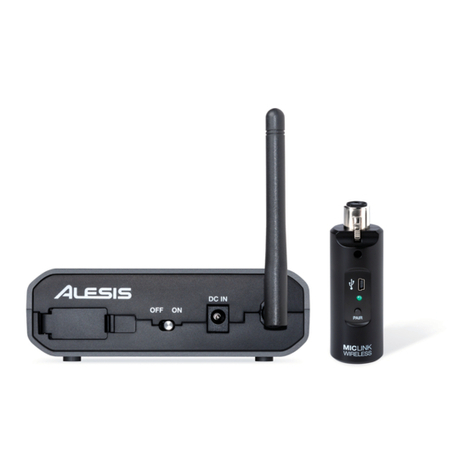©2011 Shure Incorporated
27A15525 (Rev. 1) Printed in USA
General Description
The MX150 is a professional subminiature electret condenser lavalier microphone ideal for
use in speech and other applications requiring low-profile, discreet placement. Available
with cardioid or omnidirectional patterns, the MX150 provides uncompromised sound qual-
ity and high reliability with minimal visibility for use in television broadcasting, corporate
lectures, A/V teleconferencing, House of Worship, and sound reinforcement. CommShield®
Technology offers superior RF immunity from cellular devices and digital bodypack trans-
mitters. Each microphone is supplied with a snap-fit foam windscreen to minimize wind
noise and a multi-position tie clip with integrated cable management to minimize cable
handling noise.
Features
• Available in cardioid or omnidirectional polar patterns and TQG (for use in Shure
bodypacks) or wired XLR variations
• CommShield®Technology guards against interference from Cellular RF devices and
digital bodypack transmitters
• Matte black, sleek, low-profile, design for inconspicuous placement
• Multi-position tie clip allows for a variety of placement options and features an integrated
cable management system for convenient cable dress with minimized handling noise
• Kevlar-reinforced soft-flex cable design further reduces handling noise while providing
superior flexibility for routing and placement
• User-changeable equalization caps for response shaping (omnidirectional only)
• Snap-fit, concise windscreen provides protection from plosives and wind noise with
minimal visibility
• Legendary Shure quality, ruggedness, and reliability
TQG Models
Using with Other Bodypack Transmitters
When connecting the microphone to anything other than a Shure wireless bodypack,
ensure the device provides a regulated +5 V DC (130 µA minimum) to the red conductor.
Refer to the wiring diagram in the specifications.
Model Variations
The MX150 is available in several varieties:
Ⓐ Polar Pattern
C Cardioid
O Omnidirectional
Ⓑ Connectors
TQG For Shure transmitters with 4-pin TA4F/TQG connectors
XLR Includes the RK100PK in-line preamplifier
Snap-fit Windscreen
Use the furnished snap-fit windscreen to provide plosive and wind
protection.
• Snap into the groove below the cartridge to secure to the
microphone.
• To remove, grab the plastic cage in the windscreen and lift over
capsule.
XLR Models
Phantom Power
The supplied RK100PK preamplifier requires phantom power and performs best with a 48
V DC supply (IEC-61938). However, it will operate with slightly decreased headroom with
supplies as low as 11 V DC.
Most modern mixers provide phantom power. You must use a balanced microphone cable:
XLR-to-XLR or XLR-to-TRS.
RFI Filtering
This microphone features CommShield®Technology for RF filtering. For best results in
hostile RF environments, always use the RK100PK preamp furnished with the XLR ver-
sions of this microphone.
Mounting the Microphone
This microphone is furnished with a multi-position tie clip for flex-
ible mounting options and reduced cable noise. Reference the
furnished tie clip guide for placement and routing suggestions.
Equalization Caps
The omnidirectional MX150B/O variations ship with two types of equalization caps for high-
frequency shaping:
The cardioid MX150B/C variations are only compatible with the gold cap shipped with the
microphone. Do not use the silver and black omnidirectional screens.
Normal: Silver color screen; provides the
most natural sound in most applications
Presence Boost: Black screen; provides a
smooth, high-frequency boost
Certifications
Eligible to bear CE Marking. Conforms to European EMC Directive 2004/108/EC. Meets
Harmonized Standards EN55103-1:1996 and EN55103-2:1996, for residential (E1) and
light industrial (E2) environments.
The CE Declaration of Conformity can be obtained from: www.shure.com/europe/
compliance
Authorized European representative:
Shure Europe GmbH
Headquarters Europe, Middle East & Africa
Department: EMEA Approval
Jakob-Dieffenbacher-Str. 12
75031 Eppingen, Germany
Phone: 49-7262-92 49 0
Fax: 49-7262-92 49 11 4
Note: Information in this guide is subject to change without notice. For additional informa-
tion about this product, please visit www.shure.com.
MX150B/C-TQG
Ⓐ Ⓑ
Accessories and Parts
Furnished Accessories
Multi-Position Tie Clip (3) RPM150TC
Snap-fit Windscreen (3) RPM150WS
Storage Pouch WA150
In-Line Preamplifier (XLR version only) RK100PK
Replacement Parts
Normal Cap, Gold, for MX150B/C (5) RPM208
Normal Cap, Silver, for MX150B/O (5) RPM213
Boost Cap, Black, for MX150B/O (5) RPM215
4-Pin Mini Connector (TA4F/TQG) WA330
MX150B/CMX150B/O
MX150 Subminiature
Lavalier Microphone
